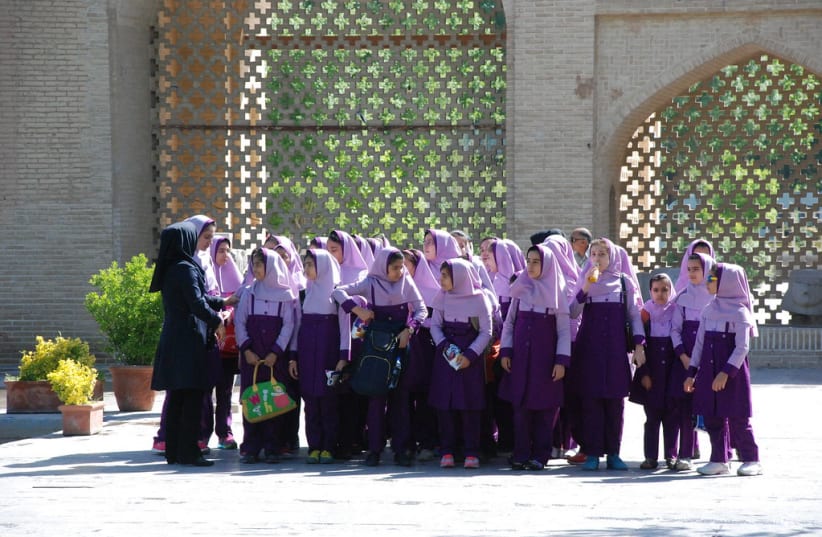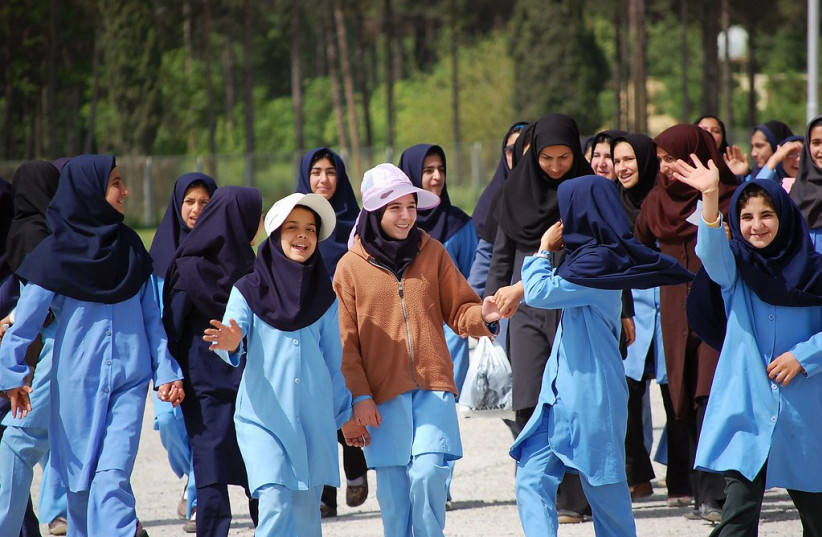Reports of chemical attacks on Iranian school girls are once again on the rise after a hiatus, leaving hundreds of young girls unable to breathe and hospitalized.
The unknown substance continues to impact girls while in class, according to The Foundation for Defense of Democracies (FDD) who is tracking and mapping the attacks, which the group says are deliberate.
Hundreds of schoolgirls have been hospitalized as a result of these "targeted chemical attacks," United Nations officials said in a statement last month.
"We are deeply concerned about the physical and mental well-being of these schoolgirls, their parents and the ability of the girls to enjoy their fundamental right to education," the UN statement said.
At the same time, students at several Iranian universities have organized sit-in protests against the country’s violent behavior in enforcing mandatory hijab and covering of female students.
One such protest is slated for April 27 at Tehran University and was planned by students of the Faculty of Psychology and Educational Sciences.
Poisoning of schoolgirls continues in Iran; schools targeted with toxic gas in several cities today again. “Our pupils have been poisoned,” says girl in video from ‘Qasem Soleimani’ school in Karaj (L); ambulance near ‘Meraj’ school in Ardabil (R). #IranChemicalAttacks @UNICEF pic.twitter.com/u4QpGy7QF6
— Ali Javanmardi (@Javanmardi75) April 16, 2023
Iranian schoolgirls have been frequently poisoned for months
Poison gas attacks on schoolgirls in Iran have shocked the world for months, from the first reports in November, at the height of the protests against the regime triggered by the suspicious death of 22-year-old Mahsa Amini who died in the custody of morality police in September after allegedly wear a hijab incorrectly. Reportedly the chemical attacks peaked in March and then briefly ceased during the Persian New Year holidays because children were out of class for two weeks.
More than 1,000 schoolgirls at more than 26 schools in 25 of Iran’s 31 provinces have now been hit by the poison gas since the first attacks in the city of Qom in November, when 15 schools were targeted. The victims reported a smell akin to rotten oranges, followed by nausea, headaches, and finally, shortness of breath left them urgently seeking medical attention.
Attacks have been reported in schools for girls in many major cities, and Tehran, Ardabil, Isfahan, Shahin Shahr, Karaj and Kermanshah were even all targeted on the same day.
Videos from ‘Toloo Eslam’ girls school in Tehran today show parents, pupils and emergency vehicles outside the school after chemical attack left many students sick, several requiring transfer to hospital. #IranChemicalAttacks @UNICEF @AmnestyIran @JavaidRehman @hrw @SkyNews @CNN pic.twitter.com/xybca09aAx
— Ali Javanmardi (@Javanmardi75) April 16, 2023
Several Iranian politicians have accused religious groups that oppose girls’ education of carrying out the poisonings, and a little-known group from Qom calling itself Fadayeen-e Velayat has claimed responsibility.
The group said that allowing girls to receive an education was a violation of Islam, and threatened to step up the attacks if the authorities continue to allow female students in the classroom.
A number of people have been arrested for allegedly carrying out the attacks. A statement by the Iranian Interior Ministry released in March said that some of the suspects had links to "foreign-based dissident media" and to the unrest that began in September following the death of Amini.
The MediaLine/Felice Friedson contributed to this report.

